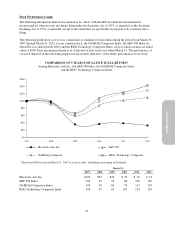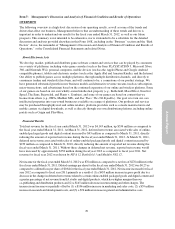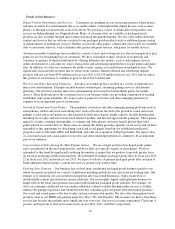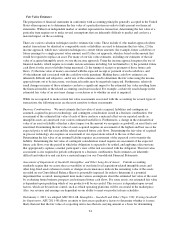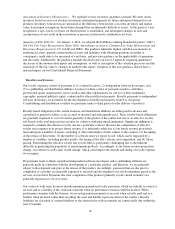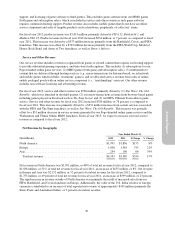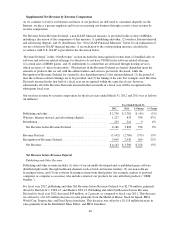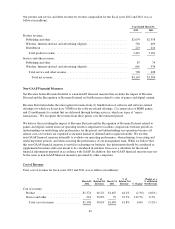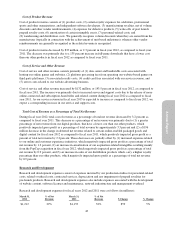Electronic Arts 2012 Annual Report Download - page 117
Download and view the complete annual report
Please find page 117 of the 2012 Electronic Arts annual report below. You can navigate through the pages in the report by either clicking on the pages listed below, or by using the keyword search tool below to find specific information within the annual report.
Annual Report
hierarchy for determining the selling price of a deliverable and require the application of the relative selling price
method to allocate the arrangement consideration to each deliverable in a multiple element arrangement that
includes tangible products.
Accordingly for our multiple element arrangements that include tangible products entered into after April 2,
2011, revenue is allocated to each separate unit of accounting for each deliverable using the relative selling prices
of each deliverable in the arrangement based on the selling price hierarchy described below. If the arrangement
contains more than one software deliverable, the arrangement consideration is allocated to the software
deliverables as a group and then allocated to each software deliverable in accordance with ASC 985-605.
We determine the selling price for a tangible product deliverable based on the following selling price hierarchy:
VSOE (i.e., the price we charge when the tangible product is sold separately) if available, third-party evidence
(“TPE”) of fair value (i.e., the price charged by others for similar tangible products) if VSOE is not available, or
our best estimate of selling price (“BESP”) if neither VSOE nor TPE is available. Determining the BESP is a
subjective process that is based on multiple factors including, but not limited to, recent selling prices and related
discounts, market conditions, customer classes, sales channels and other factors.
As the result of adopting ASU 2009-13 and ASU 2009-14, for the year ended March 31, 2012, we recognized
$23 million more revenue than would have been recognized under previous accounting standards.
We reduce revenue for estimated future returns, price protection, and other offerings, which may occur with our
customers and channel partners. Price protection represents the right to receive a credit allowance in the event we
lower our wholesale price on a particular product. The amount of the price protection is generally the difference
between the old price and the new price. In certain countries, we have stock-balancing programs for our PC and
video game system software products, which allow for the exchange of these software products by resellers under
certain circumstances. It is our general practice to exchange software products or give credits rather than to give
cash refunds.
In certain countries, from time to time, we decide to provide price protection for our software products. When
evaluating the adequacy of sales returns and price protection allowances, we analyze historical returns, current
sell-through of distributor and retailer inventory of our software products, current trends in retail and the video
game industry, changes in customer demand and acceptance of our software products, and other related factors.
In addition, we monitor the volume of sales to our channel partners and their inventories, as substantial
overstocking in the distribution channel could result in high returns or higher price protection costs in subsequent
periods.
In the future, actual returns and price protections may materially exceed our estimates as unsold software
products in the distribution channels are exposed to rapid changes in consumer preferences, market conditions or
technological obsolescence due to new platforms, product updates or competing software products. While we
believe we can make reliable estimates regarding these matters, these estimates are inherently subjective.
Accordingly, if our estimates change, our returns and price protection reserves would change, which would
impact the total net revenue we report. For example, if actual returns and/or price protection were significantly
greater than the reserves we have established, our actual results would decrease our reported total net revenue.
Conversely, if actual returns and/or price protection were significantly less than our reserves, this would increase
our reported total net revenue. In addition, if our estimates of returns and price protection related to online-
enabled packaged goods software products change, the amount of deferred net revenue we recognize in the future
would change.
Significant management judgment is required to estimate our allowance for doubtful accounts in any accounting
period. We determine our allowance for doubtful accounts by evaluating customer creditworthiness in the
context of current economic trends and historical experience. Depending upon the overall economic climate and
the financial condition of our customers, the amount and timing of our bad debt expense and cash collection
could change significantly.
33






